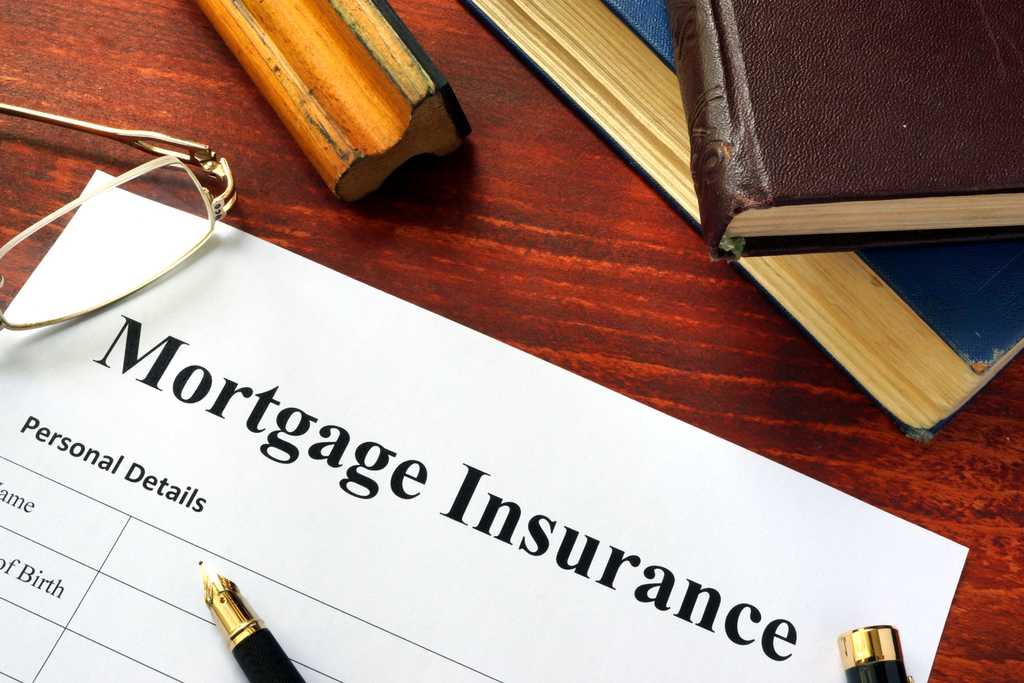There are numerous costs involved in buying a home, and some of the expenses you face could last for years (or even decades) after you move in. For example, you'll have to pay closing costs to take out a mortgage in the first place, and your monthly mortgage payment will include property taxes, homeowners insurance, and interest each month in addition to your principal payment. In some cases, you may even have to pay for mortgage insurance within your monthly housing payment — even if you prefer not to.
But, what is mortgage insurance exactly? And, how does it work? You may also be wondering who is required to fork over the extra money for mortgage insurance each month, and whether you could avoid this added housing expense altogether.
This guide to mortgage insurance will answer these questions and others. If you're planning to buy a home and wondering whether you need mortgage insurance, read on to learn more.
What is Mortgage Insurance?
The first detail you should know about mortgage insurance is that it doesn't protect you at all. According to the Consumer Financial Protection Bureau (CFPB), mortgage insurance is purchased to protect the lender (and only the lender) in case you default.
With mortgage insurance in place, lenders can loan you more money than you might otherwise qualify for. While different types of mortgage insurance have their own requirements, mortgage insurance on conventional home loans is required for borrowers who are putting down less than 20% of their home's purchase price.
How Does Mortgage Insurance Work?
Generally speaking, borrowers pay for private mortgage insurance on a monthly basis as part of their housing payment. With some types of mortgage insurance, including MIP (mortgage insurance premiums) on an FHA loan, borrowers are required to pay upfront mortgage insurance and a monthly amount.
With mortgage insurance on a conventional home loan, the added cost will eventually disappear. Once you have 22% equity in the home you purchased, your mortgage lender will automatically remove the added cost from your monthly housing payment.
With other types of mortgage insurance, including the mortgage insurance required for FHA loans, it's possible you could pay this added cost for the entire duration of your home loan. We'll go over each type of mortgage insurance and how they work below.
What Does Mortgage Insurance Cover?
We already explained how mortgage insurance protects the lender and not the borrower, which may be hard to understand since the borrower is the one making the monthly payments. But, what does mortgage insurance cover exactly?
For the most part, mortgage insurance provides financial protection for the lender in case you default on your home loan. If you fall behind on monthly housing payments or default on your mortgage entirely, your lender can use this coverage to recoup some of their losses.
Specifically, mortgage insurance covers a certain percentage of the lender's loss in the event of foreclosure. While this percentage varies, it could be between 20% and 30%. Not only does mortgage insurance protection cover a percentage of losses faced by the lender, but it can also cover delinquent interest and lender foreclosure costs.
Types of Private Mortgage Insurance
The type of mortgage insurance you need depends on the type of home loan you qualify for. You may also have some options in terms of how and when you cover mortgage insurance premiums for your home purchase.
Borrower-Paid Mortgage Insurance
Borrower-paid mortgage insurance (BPMI) is the most common type of private mortgage insurance used for a home purchase. This type of PMI is paid by the borrower on conventional home loans when they put less than 20% of the home purchase price down upfront.
After your home loan closes and you begin making payments, you'll pay PMI until you reach 22% equity based on the original repayment plan and value of your property. At that point, your lender is legally required to remove PMI from your home loan, resulting in a lower monthly payment. This is true regardless of how much your home is worth at the time, even if home values have plummeted.
If you pay extra toward the principal of your home loan or your home has increased in value, on the other hand, you can also take steps to have PMI removed from your home loan early. Typically, this involves paying for an appraisal that shows you have 20% equity in your home. If you can accomplish this feat based on your current loan-to-value ratio (LTV), you can get PMI out of your life on a much faster timeline.
Single-Premium Mortgage Insurance
In some cases, borrowers have the option to pay an upfront PMI premium instead of paying on a monthly basis. This type of PMI can be rolled into the cost of a mortgage or paid upfront at closing.
The benefit of paying PMI upfront is that it can result in a lower monthly mortgage payment. However, this could be all for nothing if a homeowner sells their property and moves before the point where private mortgage insurance premiums would normally phase out.
USDA Mortgage Insurance
The United States Department of Agriculture (USDA) backs mortgages on rural homes in eligible areas. These mortgages can require as little as 0% down and they come with lower closing costs than conventional loans. If you're curious whether you could use a USDA mortgage in the part of the country you're considering moving to, you can check the USDA eligibility map to find out.
While USDA loans don't technically require mortgage insurance, they do require a guarantee fee that helps guarantee the loan. This fee is actually charged in two separate segments, with USDA borrowers needing to pay an upfront fee and an annual fee.
When you take out a USDA home loan, the upfront guarantee fee works out to 1% of the loan amount, or $3,000 on a $300,000 mortgage. The annual fee is equal to .35% of your loan balance, and it's split up over each monthly mortgage payment. On the same $300,000 mortgage, the annual guarantee fee works out to $1,050 per year, or $87.50 per month.
With the USDA guarantee fee, you pay the annual amount for the life of your home loan regardless of how much equity you have in your property.
FHA Mortgage Insurance
FHA mortgages are popular with new homeowners since they let them take out a mortgage with a credit score as low as 580 and a down payment as low as 3.5%. However, this type of home loan has its own form of mortgage insurance, which is referred to as MIP (mortgage insurance premiums).
With MIP, borrowers pay mortgage insurance in two different ways — an upfront premium and an additional annual payment that is spread over your monthly mortgage payments.
The upfront component of MIP works out to 1.75% of the total value of the loan, or $5,250 on a $300,000 mortgage. This amount is paid upfront as part of your closing costs, although borrowers can also add it to the balance of their new home loan.
From there, the cost for annual mortgage insurance premiums depend on the specifics of your loan.
For example, if you borrow less than or equal to $625,500 with a down payment of at least 10%, your annual MIP works out to 0.45%. However, if you borrow less than or equal to $625,500 with a down payment of less than 10%, you'll need to pay .70% annually.
If your loan's term is longer than 15 years and you borrow less than or equal to $625,500 with a down payment of at least 5%, you would need to pay an annual MIP of .80%. However, if you borrow less than or equal to $625,500 with a down payment of less than 5%, you'll need to pay .85% annually.
There are several other scenarios that could impact your annual MIP cost, so check with your lender if you plan to take out a FHA home loan in the near future. With that being said, you should know that borrowing more with a lower down payment typically translates to higher annual premiums. Likewise, a larger down payment for a lower loan amount will leave you with lower annual MIP costs.
Also note that how long you'll pay MIP on a FHA mortgage depends on your down payment. If you have a down payment of at least 10% when you purchase your home, you'll pay MIP for 11 years. If your down payment is less than 10%, you'll pay MIP for the entire term of your home loan.
How Much Does Private Mortgage Insurance Cost?
While the costs for MIP on FHA Home Loans can be easily determined, the costs for private mortgage insurance (PMI) on a conventional home loan can vary based on several factors. For example, PMI costs can vary based on:
- Your loan amount
- Your down payment
- Type of property you're purchasing
- Your debt-to-income ratio (how much debt you owe in relation to your income)
- Your credit score
- Loan term
According to Quicken Loans, the average cost of PMI on a conventional home loan typically falls between .5% to 1% of the loan amount each year. If you take out a $400,000 mortgage and have to pay PMI, this means your annual premiums could work out to $2,000 to $4,000 per year, or $167 to $333 per month.
When you consider the fact that this amount doesn't protect the borrower in any way, it's easy to see PMI as nothing more than "money down the drain." By and large, this is one of the main reasons consumers try to save up a large enough down payment so they can avoid this added cost. By putting down 20% or more when you take out a conventional mortgage, you can avoid PMI, secure a lower monthly housing payment, and ensure more of your payment goes to paying down your loan balance each month.
Who Needs Private Mortgage Insurance?
If you take out a FHA home loan or a USDA home loan, you will need to pay MIP or a guarantee fee regardless of your down payment. However, you can avoid PMI on a conventional mortgage if you save up a down payment of at least 20%. This means putting down at least $60,000 on a home with a purchase price of $300,000 or putting down at least $30,000 for a home worth $150,000. With 20% down at closing, you have instant equity in your property and lenders consider the transaction less risky as a result.
Since housing prices are high right now, however, saving up a 20% down payment can be an incredibly difficult feat. The National Association of Realtors (NAR) reports that the median housing price worked out to $352,800 nationally as of September 2021, which means the average 20% down payment is currently at $70,560.
If you don't have that kind of cash to put down, or you plan to take out a FHA home loan or USDA loan, you should plan on paying for mortgage insurance. You may feel like you're throwing money away, but this extra expense can help you get into a home sooner rather than later.
With this being said, mortgage insurance does not have to be forever, even if you apply for a FHA loan or USDA loan.
Private mortgage insurance (PMI) drops off conventional home loans automatically once you have at least 22% equity based on your original repayment timeline, and you can take steps to have PMI dropped sooner if your home's value has increased. With FHA loans and USDA loans, you can always refinance into a new conventional mortgage without PMI once you owe less than 80% of your home's value.

